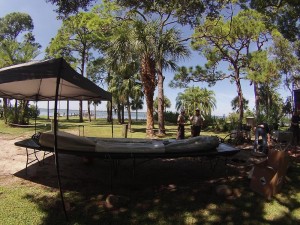Black Creek is a 13.0-mile-long tributary in Clay County. The Black Creek Basin is located within the lower St. Johns River drainage basin in northeast Florida. The basin is approximately 484 square miles in area and is irregularly shaped. It drains nearly all of Clay County and portions of Duval County. The basin also drains very small portions of Baker, Bradford, and Putnam Counties. The main drainage features of the basin are Black Creek and its two forks. The North Fork and South Fork converge east of the City of Middleburg to form Black Creek, which flows east to its outfall at the St. Johns River. There are one hundred twenty-eight individual soil types contained within the Black Creek. The creek is named for the water coloration, caused by the presence of tannin from decaying leaves and vegetation. It is considered to be one of the cleanest creeks in the state. Jacksonville is the site of the nation’s 14th largest deep-water port and its associated shipbuilding industry.
The Trail Ridge along the basin’s northwestern boundary is the site of heavy mineral mining, primarily for titanium. Sand and gravel are also mined on the sandy ridges of Clay and western Putnam Counties. The basin contains a number of different natural communities. Predominant upland types are hardwood hammock, sandhill, and mixed hardwood pine. Scrub habitat is found on sand dunes or sandbars that were once part of ancient shorelines. Scrub communities are largely unique to Florida and provide habitat for some of the basin’s rarest species. Freshwater wetland communities, include hardwood swamp, freshwater marsh, and cypress swamp. Various types of publicly owned lands in the basin include state parks, preserves, wildlife management areas, and state forests.
























